India is a treasure trove of ancient civilizations, majestic architecture, and timeless traditions. Recognizing the unparalleled richness of India’s cultural and natural history, UNESCO (United Nations Educational, Scientific and Cultural Organization) has inscribed 42 World Heritage Sites in India (as of 2025). These sites hold global significance for their historical, architectural, ecological, or cultural value.
In this post, we take you through some of the most iconic UNESCO World Heritage Sites in India, offering detailed insights, why they matter, best times to visit, and how they shape India’s cultural identity.
What Is a UNESCO World Heritage Site?
A UNESCO World Heritage Site is a landmark or area selected by UNESCO for having cultural, historical, scientific, or natural significance. Once inscribed, these sites receive international recognition and protection under the World Heritage Convention.
For India, these sites are not just tourism hotspots—they are living chronicles of our past and guardians of our heritage.

Top UNESCO World Heritage Sites in India
1. Taj Mahal – Agra, Uttar Pradesh
Declared: 1983
Type: Cultural
The Taj Mahal, one of the Seven Wonders of the World, is a white marble mausoleum built by Mughal Emperor Shah Jahan in memory of his beloved wife, Mumtaz Mahal. A symbol of eternal love, this architectural marvel sits gracefully on the banks of the Yamuna River.
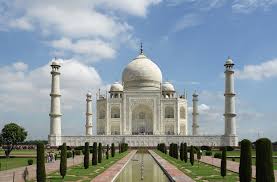
Why Visit:
- Marvel at the intricate Mughal architecture
- Witness the changing hues of the marble throughout the day
- Best visited during sunrise or sunset
Best Time to Visit: October to March
Fun Fact: Over 20,000 artisans worked on this structure for more than 20 years.
2. Khajuraho Group of Monuments – Madhya Pradesh
Declared: 1986
Type: Cultural
These temples are world-famous for their erotic sculptures, Nagara-style architecture, and symbolism of life and spirituality. Built between 950-1050 AD by the Chandela dynasty, the temples are dedicated to Hinduism and Jainism, showcasing India’s inclusivity.
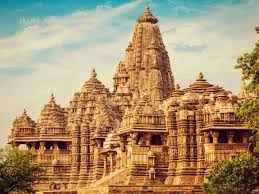
Why Visit:
- Explore India’s unique fusion of spirituality and sensuality
- Admire exceptional stone carvings and motifs
Best Time to Visit: October to February
Did You Know? Only 20 of the original 85 temples have survived time.
3. Kaziranga National Park – Assam
Declared: 1985
Type: Natural
Kaziranga is home to two-thirds of the world’s one-horned rhinoceroses and boasts significant populations of tigers, elephants, swamp deer, and birds. The park lies on the floodplains of the Brahmaputra River.

Why Visit:
- Ideal for wildlife photography
- One of India’s best managed national parks
Best Time to Visit: November to April
Unique Feature: UNESCO acknowledged Kaziranga for its conservation success in reviving endangered species.
4. Sun Temple – Konark, Odisha
Declared: 1984
Type: Cultural
Built in the 13th century by King Narasimhadeva I, this chariot-shaped temple is dedicated to the Sun God Surya. It’s renowned for its intricate carvings and astronomical alignment.
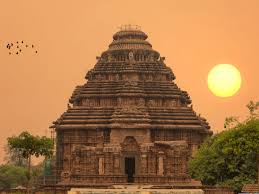
Why Visit:
- Witness architectural brilliance shaped like a sun chariot
- Experience spiritual and cosmic symbolism
Best Time to Visit: October to March
Special Insight: Each wheel of the chariot functions as a sundial.
5. Ajanta Caves – Maharashtra
Declared: 1983
Type: Cultural
The Ajanta Caves are a collection of 30 Buddhist rock-cut caves carved between the 2nd century BCE and 6th century CE. The caves contain mesmerizing frescoes, murals, and sculptures depicting the life of Buddha.
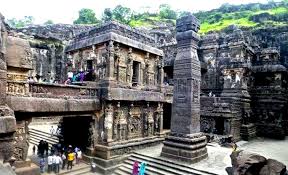
Why Visit:
- Artistic excellence that dates back over 2,000 years
- Spiritual tranquility amidst stunning cave architecture
Best Time to Visit: November to March
Highlight: These caves were hidden in the jungle until rediscovered in 1819 by a British officer.
6. Ellora Caves – Maharashtra
Declared: 1983
Type: Cultural
Unlike Ajanta, Ellora combines Buddhist, Hindu, and Jain monuments in a single complex. The Kailasa Temple, carved from a single rock, is an engineering wonder.

Why Visit:
- See monolithic architecture come to life
- Experience religious harmony in stone
Best Time to Visit: October to March
Trivia: The Kailasa temple is twice the size of the Parthenon in Athens!
7. Red Fort Complex – Delhi
Declared: 2007
Type: Cultural
Commissioned by Shah Jahan in 1638, the Red Fort served as the political and ceremonial center of the Mughal Empire. Today, it’s the venue for India’s Independence Day address.
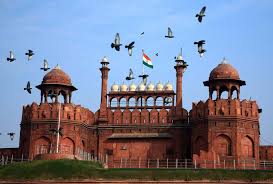
Why Visit:
- An icon of India’s freedom struggle
- Majestic Mughal palaces, gardens, and museums
Best Time to Visit: October to March
Bonus Tip: Don’t miss the light and sound show in the evenings.
8. Great Living Chola Temples – Tamil Nadu
Declared: 1987
Type: Cultural
These temples—Brihadeshwara (Thanjavur), Gangaikonda Cholapuram, and Airavatesvara (Darasuram)—are masterpieces of the Chola Dynasty (9th to 13th century). Built in Dravidian style, they reflect architectural, scientific, and philosophical excellence.

Why Visit:
- Discover ancient engineering techniques
- Understand the cultural richness of Tamil heritage
Best Time to Visit: November to March
Interesting Fact: The Brihadeshwara Temple has no shadow at noon!
9. Hampi – Karnataka
Declared: 1986
Type: Cultural
Once the capital of Vijayanagara Empire, Hampi is a UNESCO site filled with ruins, temples, pavilions, and bazaars set against surreal landscapes. It was once among the richest cities in the world.

Why Visit:
- Trek among ruins and surreal granite landscapes
- Feel transported to a bygone royal era
Best Time to Visit: October to February
Cultural Note: Hampi is also a spiritual site with Virupaksha Temple still active.
10. Group of Monuments at Mahabalipuram – Tamil Nadu
Declared: 1984
Type: Cultural
Built by the Pallava Kings in the 7th and 8th centuries, Mahabalipuram features rock-cut temples, rathas (chariots), and the awe-inspiring Shore Temple on the Bay of Bengal.
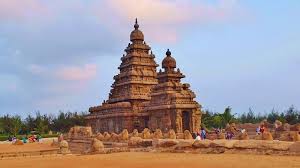
Why Visit:
- Witness some of India’s earliest stone temples
- Ideal for beachside temple photography
Best Time to Visit: November to February
Bonus: Visit the nearby Pancha Rathas and Arjuna’s Penance.
What Does Being a UNESCO Site Mean?
Being a UNESCO World Heritage Site means:
- International recognition for historical/cultural/natural value
- Greater protection and funding
- Promotes global tourism and awareness
- Encourages sustainable conservation
NOTE : Lucknow has Been Nominated as UNESCO Creative City of Gastronomy. Read More About it.
Why Visit UNESCO World Heritage Sites in India?
- Immerse in History: Learn stories that textbooks miss.
- Cultural Diversity: Experience the essence of India’s pluralism.
- Architectural Wonders: Witness human brilliance and innovation.
- Spiritual Journeys: Many sites offer peaceful and meditative experiences.
- Eco-Tourism: Parks like Kaziranga and Sundarbans offer nature at its best.
UNESCO World Heritage Sites in India : Final Thoughts
Exploring UNESCO World Heritage Sites in India is like flipping through the most fascinating pages of world history. Whether you’re a history buff, a traveler, or a spiritual seeker, these sites offer an unmatched experience of India’s legacy, pride, and culture.
So pack your bags, charge your camera, and embark on a journey to witness the soul of India etched in stone and nature.
Frequently Asked Questions (FAQs) About UNESCO World Heritage Sites in India
1. What is a UNESCO World Heritage Site?
A UNESCO World Heritage Site is a location recognized by the United Nations Educational, Scientific and Cultural Organization (UNESCO) for its outstanding cultural, historical, scientific, or natural value to humanity. These sites are protected under international treaties and are preserved for future generations due to their universal significance.
2. How many UNESCO World Heritage Sites are there in India as of 2025?
As of 2025, India has 42 UNESCO World Heritage Sites, which include:
- 34 Cultural sites
- 7 Natural sites
- 1 Mixed site (Khangchendzonga National Park)
This places India among the top countries globally in terms of the number of heritage sites.
3. Which was the first Indian site to be declared a UNESCO World Heritage Site?
In 1983, the first Indian sites to be inscribed were:
- Ajanta Caves (Maharashtra)
- Ellora Caves (Maharashtra)
- Agra Fort (Uttar Pradesh)
- Taj Mahal (Uttar Pradesh)
These were recognized for their outstanding cultural value.
4. What are the newest additions to the UNESCO list from India?
One of the latest additions is Santiniketan (West Bengal), the university town founded by Rabindranath Tagore, which was declared a UNESCO site in 2023. It was recognized for its unique educational and cultural significance.
5. What are the benefits of being a UNESCO World Heritage Site?
UNESCO designation brings several benefits, including:
- Global recognition and prestige
- Increased tourism and economic benefits
- International assistance and funding
- Legal protection and conservation support
- Cultural and educational exchange opportunities
6. Are UNESCO sites in India tourist-friendly and accessible?
Yes, almost all UNESCO sites in India are well-maintained, with dedicated visitor centers, tour guides, signage, and transportation options. Many also offer light and sound shows, interactive exhibits, and wheelchair accessibility.
7. Can I visit all UNESCO World Heritage Sites in India in one trip?
Due to India’s vast geography, visiting all 42 sites in a single trip is not practical. Instead, you can:
- Choose a regional circuit (e.g., Maharashtra for Ajanta, Ellora, and Chhatrapati Shivaji Terminus)
- Plan theme-based trips (e.g., Buddhist trail, Mughal architecture, wildlife reserves)
8. Which Indian state has the maximum number of UNESCO sites?
Maharashtra has the highest number of UNESCO World Heritage Sites in India, with a total of 6:
- Ajanta Caves
- Ellora Caves
- Elephanta Caves
- Chhatrapati Shivaji Terminus
- Victorian Gothic and Art Deco Ensemble, Mumbai
- The Junnar Caves (proposed and under review)
9. What types of sites are recognized by UNESCO in India?
UNESCO recognizes three types:
- Cultural: Temples, forts, cave complexes, and architectural marvels (e.g., Hampi, Taj Mahal)
- Natural: National parks, wetlands, biosphere reserves (e.g., Kaziranga, Western Ghats)
- Mixed: A site with both cultural and natural attributes (e.g., Khangchendzonga National Park in Sikkim)
10. What is the best time of year to visit UNESCO sites in India?
Most sites are best visited during the winter and early spring months (October to March), when the weather is pleasant for sightseeing. Exceptions include:
- Kaziranga & Sundarbans – Ideal from November to April
- Himalayan sites – Best during May to June
11. Do I need a guide to explore these sites?
While many sites offer information boards and audio guides, hiring a certified local guide greatly enhances the experience by:
- Providing historical and cultural context
- Sharing hidden stories and legends
- Helping with photography angles and offbeat spots
12. Are there entry fees for UNESCO sites in India?
Yes, most UNESCO sites charge a nominal entry fee, which differs for:
- Indians (usually ₹25–₹50)
- Foreigners (typically ₹300–₹600)
- Students and children may receive discounts or free entry at some sites.
Some sites also have additional charges for camera or video equipment.
13. Are UNESCO World Heritage Sites in India child and family-friendly?
Yes. Many of these sites offer:
- Educational tours for children
- Clean restrooms and eateries
- Open spaces to walk or explore
Examples include: - Red Fort (Delhi)
- Hampi (Karnataka)
- Khajuraho (Madhya Pradesh)
Always check in advance for facilities and accessibility.
14. Are any of these sites endangered or under threat?
UNESCO occasionally flags sites that face threats from:
- Urbanization
- Pollution
- Illegal encroachments
- Natural disasters
For example, Manas Wildlife Sanctuary was once on the “World Heritage in Danger” list but was later restored thanks to conservation efforts.
15. Can I volunteer or contribute to preserving these sites?
Yes, several government and non-profit initiatives allow:
- Volunteering in conservation
- Donating to restoration funds
- Participating in cleanliness drives and awareness programs
You can connect via the ASI (Archaeological Survey of India) or UNESCO India’s initiatives.
For more such Travel Destinations in India, Visit Popnewsblend.

Hi, I’m Prashant Jain — a curious soul, storyteller, and content creator at heart.I’ve always been drawn to the world of entertainment, travel, sports, health & lifestyle — not just as a writer, but as someone who genuinely lives these experiences. Whether I’m binge-watching the latest OTT series, exploring offbeat spiritual destinations in India, or diving deep into wellness routines and cricket match insights, I love sharing what I discover with like-minded readers.
PopNewsBlend is my way of blending personal journeys with meaningful stories — ones that inform, inspire, and keep you ahead of the curve. Everything I write comes from real observations, hands-on experiences, and a deep passion for understanding the world around us.
Discover more from Popnewsblend
Subscribe to get the latest posts sent to your email.

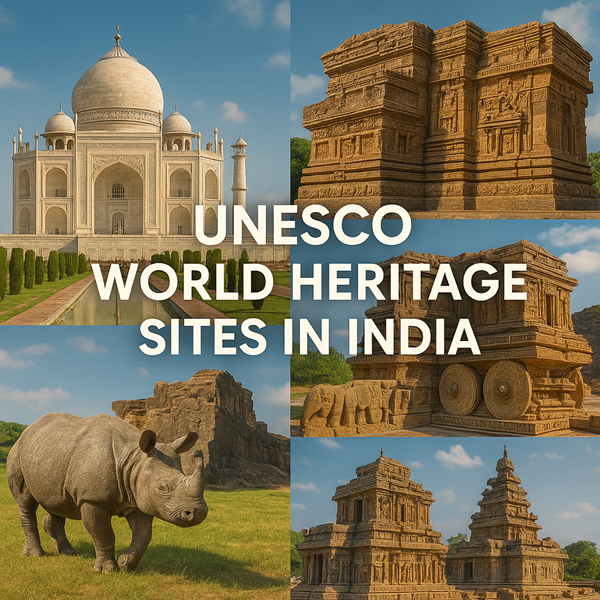






Pingback: My Journey to Nepal: A Soulful Adventure Through the Himalayas, Heritage, and Heart - Popnewsblend
Pingback: Amazing Facts About Karnataka You Probably Didn't Know
Pingback: Top 10 Wildlife Sanctuaries in India for Tiger Sightseeing This Winter
Pingback: 12 Indian Places On Earth That Look Unreal - Must Visit Magical Destinations
Pingback: 10 Lesser Known Inventions of Ancient India That Will Amaze You